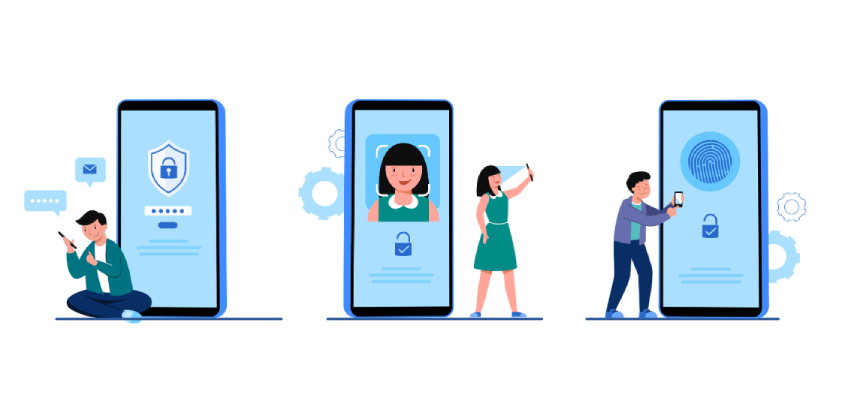
14, Mar, 2024
Biometric Authentication: A Balancing Act Between Convenience and Security
We’ve all been there: staring at a login screen, mind racing to recall a complex password. Biometric authentication promises to eliminate this struggle. This technology utilises unique physical or behavioural characteristics, like fingerprints, facial scans, or even voice patterns, to verify your identity. But is it a silver bullet for cybersecurity, or are there hidden costs to consider? Let’s explore the advantages and challenges of this rapidly technology.
The Allure of Biometrics: Security and Convenience Take Center Stage
Biometric authentication has several advantages over the regular methods like passwords and PINs. Security takes a leap forward. Unlike passwords, which can be stolen through phishing attacks or brute-force hacking, biometric traits are much harder to recreate. Your fingerprint or iris pattern are as unique as you are, making unauthorised access significantly more difficult.
Convenience is another major perk. Gone are the days of scrambling to remember intricate passwords or carrying around security tokens. Biometric authentication is fast and effortless. A simple fingerprint scan on your phone or a glance at a facial recognition system can unlock your device or grant access to secure applications. The user experience is streamlined, freeing you from the burden of remembering complex credentials.
Accuracy also gets a boost. Fingerprint scanners and facial recognition software are constantly being refined, leading to more precise identification. This translates to fewer frustrated login attempts due to typos or forgotten passwords. Biometric systems can even adapt to slight changes in your physical characteristics over time, ensuring continued functionality.
Privacy Concerns and Technical Hurdles
While the benefits are undeniable, biometric authentication isn’t without its challenges. Privacy concerns are a major hurdle. Storing biometric data raises a red flag. What happens if this sensitive information, like your iris scan or voiceprint, falls into the wrong hands?
While biometrics offer advantages, challenges require careful consideration:
- Privacy Concerns: Storing sensitive biometric data raises privacy issues. Robust data protection measures and user control over data usage are crucial.
- Technical Limitations: Biometric systems are not infallible. Environmental factors or physical variations can lead to errors like granting access to unauthorized individuals or denying access to legitimate users.
- Cost and Accessibility: Implementing biometric systems can be expensive, particularly for high-security features. Additionally, not everyone has access to compatible devices or may have physical limitations hindering fingerprint scanning or voice recognition.
The Road Ahead: Balancing Security and Privacy in a Biometric Future
While biometrics isn’t without its challenges, it remains a powerful tool with immense potential. Here’s what the future holds:
- Enhanced Security: Advancements in technology are leading to more secure storage methods and encryption for biometric data. This, along with stricter data protection laws like the Digital Personal Data Protection Act, empowers you with greater control over your information, fostering trust in biometric systems.
- Multi-Factor Authentication: The future is likely to see a rise in multi-factor authentication. This combines biometric verification with traditional methods like passwords or one-time codes, offering an extra layer of security without sacrificing convenience.
- Innovation for Accessibility: New biometric methods are constantly being developed to overcome limitations and reach a wider user base. This could include advancements in iris recognition, vein scanning, or even behavioural patterns like your typing rhythm.
In essence, the future of biometrics is about striking a balance between robust security and user comfort. As the technology evolves and regulations adapt, biometric authentication has the potential to become a seamless and secure way to safeguard your data.
The Bottom Line: A Well-Informed Choice
Biometric authentication offers a convenient and secure way to safeguard your data. However, it’s crucial to be aware of the potential downsides and choose systems with robust security protocols and clear data privacy practices. Ultimately, the decision to embrace biometrics comes down to a personal evaluation of the trade-offs between security and privacy. As with any technology, staying informed and making conscious choices is key to reaping the benefits while mitigating the risks.
